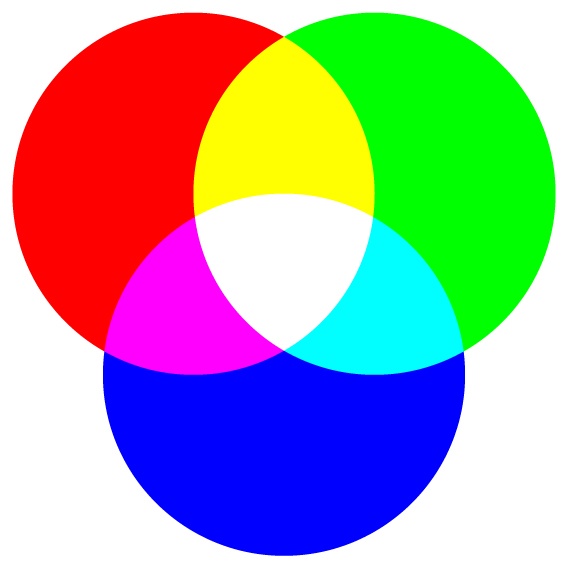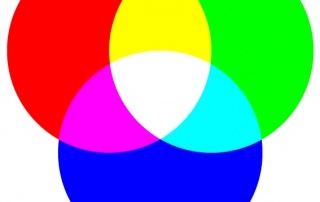Printing in colour: CMYK vs RGB vs Pantone
The colour mode that computers and other devices use to generate images on screen is completely different to the colour mode used in printing. Computers will display colours in a combination called RGB – Red / Green / Blue – and printers use a combination called CMYK – Cyan / Magenta / Yellow / Key (Black).
All print files must be submitted to KRDPrint in CMYK colour. In specific cases PMS colours can be used but please ask for a quote before designing with Pantone colours in mind!
RGB
RGB is an additive colour space, with coloured red, green and blue lights added to a black screen to produce the colour you see. With all 3 colours combined at their maximum value, the result is white.
Many design tools will often default to an RGB workspace when creating a new document. RGB is great for creating digital graphics – the colours are bright and vibrant when viewed on-screen but may not convert accurately when printed.
If you are creating graphics for web, email, or any video media, use RGB for faithful colour reproduction.
CMYK
CMYK is a subtractive colour space so it works the opposite way to RGB.
You begin with white (paper) and as each colour is added, they absorb (subtract) the light waves being reflected back to your eye. When all colours are combined the light is completely absorbed and will appear black.
CMYK colours are usually less vibrant than RGB colours because rather than using light, you’re using ink to create colours. Plus each computer monitor is calibrated differently, so trying to compare print colours to on screen colours is not possible.
Pantone (PMS)
PMS stands for Pantone Matching System and is a different form of printed colour.
The Pantone system uses mixtures of different inks to create very specific and consistently reproducible ‘spot’ colours. Due to improved efficiency and colour consistency on modern printers, PMS colours are not as common these days, but are still the best way to ensure colour consistency in logos or other elements that require it.
For exact colour matching PMS is recommended, although it can be expensive for short print runs (less than 5000). CMYK inks can attempt to match PMS inks but there will always be a slight shift in the colour output.


